OXO Good Tips Blogs: Cooking & Baking
Herb Guide: How to Use—and Store—Fresh Herbs
A dash of fresh herbs can elevate your meals. Learn how to prepare, store and freeze them—plus, understand the difference between fresh and dried herbs in your favorite recipes.
OXO Good Tips Blog | 11th June 2024
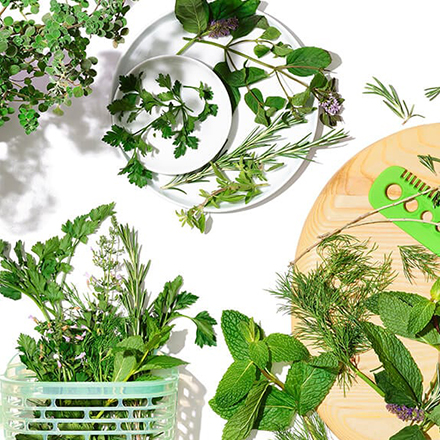
Cooking with fresh herbs adds brightness and flavor to dishes. But since these verdant leaves tend to be small and fragile, it’s smart to learn how to lengthen their life so they stay fresh longer.
Start with this guide for how to cook with and store fresh herbs, including freezing tips as well as easy ways to get more mileage out of unused sprigs to flavor your meals. And if you’ve ever wondered about the difference between using fresh herbs and dried ones in recipes, we’ve got you covered.
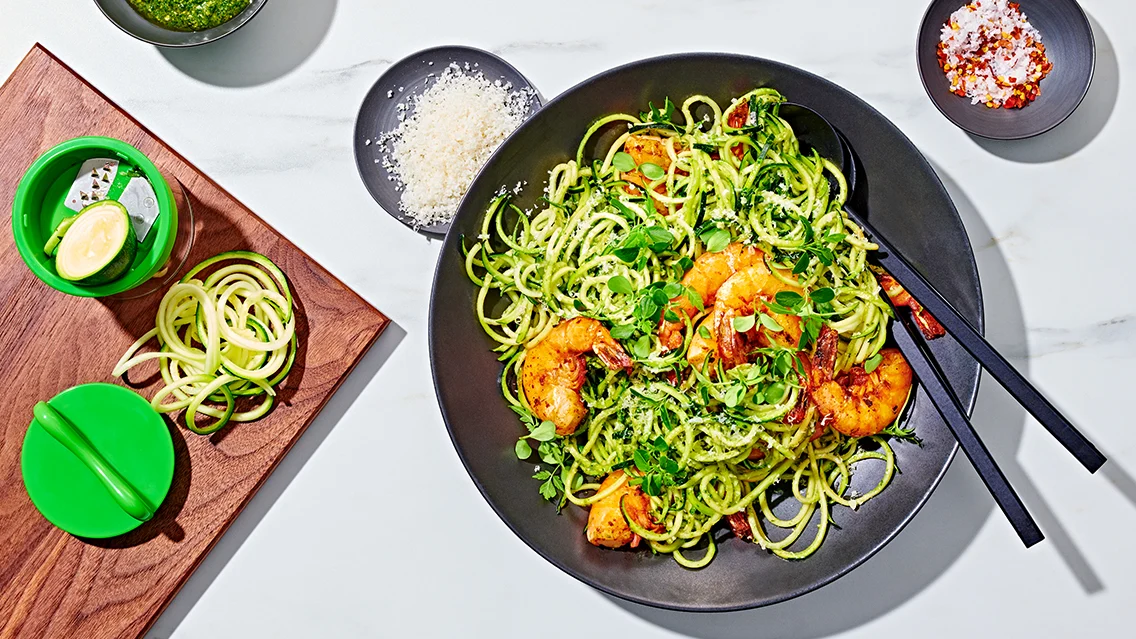
Cooking With Fresh Herbs
Using fresh herbs to enhance your favorite dinner recipes may seem like advanced-level stuff, but it’s actually a simple method to pick up. Start by figuring out what kind of flavor you want to add in. To assess the freshness at the store, squeeze a leaf between two fingers and sniff—a strong smell and slightly moist touch means the herb is ready for use.
Then, determine whether the herb you have is tender or on the hardy side. Tender herbs like basil, mint, parsley and cilantro have soft leaves and stems, while hardy herbs such as rosemary, thyme and oregano sport sturdier foliage and rigid stems. Tender fresh herbs are often best added to dishes toward the end of cooking, since their leaves and flavor are delicate. Hardier herbs can take the heat, so they’re often added in the beginning of recipes in order to infuse a soup or stew with flavor as it simmers away on the stove.
Let’s take a closer look at how these popular herbs factor into your favorite recipes:
Cooking With Basil: Fragrant basil’s glossy soft leaves are the backbone of pesto, but they are also excellent when paired with spaghetti and meatballs, tomato salad and every kind of pizza. You can add snipped basil to greens or grains, fold it into scrambled eggs or pair it with mozzarella and prosciutto.
Cooking With Parsley: Parsley is so much more than a pretty plate garnish. Italian parsley, also called flat-leaf, features feathery serrated leaves that pack a bigger flavor punch than the curly kind. Chop and sprinkle over sautéed green beans, mix it into rice or add it to bean salads. Or, try making a green sauce like chimichurri to top steaks and pork chops.
Cooking With Rosemary: Piney rosemary has stiff needle-like spikes and a woody stem, making it ideal for tying in a bundle to use as a brush for basting grilled meats, especially lamb. Or add rosemary sprigs to roasted potatoes, focaccia, chicken and pasta dishes. Because of its hardier structure, you can add this herb at the beginning of your cooking and let it slowly soften in the heat.
Cooking With Oregano: Fuzzy oval leaves signal oregano, a pungent hardy herb that’s a workhorse in the kitchen. The scent of this fresh herb will remind you of Italian food, and indeed it pairs perfectly with tomato sauce, grilled eggplant, pesto, salad dressings, zucchini and meatballs.
Cooking With Sage: This classic Thanksgiving herb has long velvety leaves that are typically added to stuffing, tossed with roasted sweet potatoes or matched with pork dishes. Sage is also fantastic when fried whole and then served over risotto or ravioli with butter sauce.
Cooking With Thyme: Grassy and fresh, thyme’s tiny pointed leaves can be stripped off the stem and chopped (you can make leaf removal easier with this herb comb) or whole sprigs can be added to pan roasts. Try thyme with salmon, flatbreads, compound butter or soup or use it when poaching fruits like pears or peaches.
Cooking With Cilantro: Zesty cilantro has a lemony, peppery taste to it. A visual cousin to parsley, the distinctive leaves provide an elegant garnish. The stems are just as flavorful, so the entire herb can be used in the blender. Add it to pesto sauce, salads, fajitas or burritos.
Cooking With Dill: One of the more delicate herbs, eyelash-shaped dill is best added at the end of the cooking process to maximize its sweet flavor. It tastes great when folded into potato salad or used in a dressing for salmon. It pairs as well with beets as it does with lamb, and of course it’s at the heart of vegetable pickling.
Cooking With Mint: Refreshing and versatile, mint works well in your cocktails, fruit salad, and even pea soup. Paired with spicy stir-fry, it has a cooling effect, while it ups the sweet factor in a berries and yogurt parfait or as garnish for frozen yogurt cups. Try mint with sugar snap peas and ricotta salata for an easy summer dish.
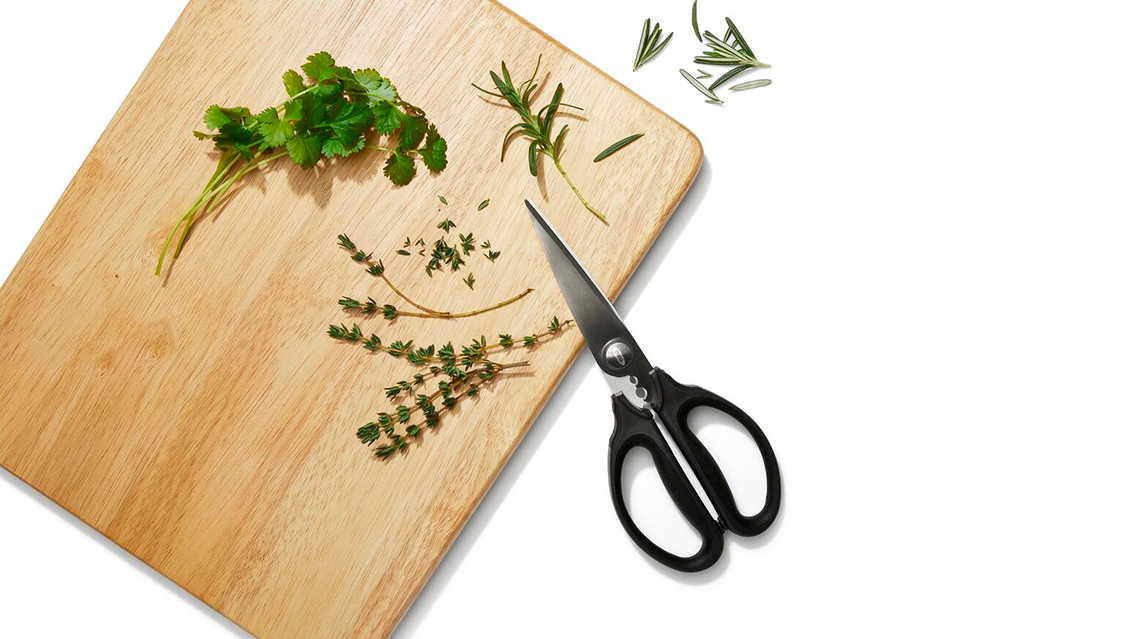
How to Wash Fresh Herbs
Whether your fresh herbs come from the grocery store, farmer’s market or your own backyard, it’s a good idea to wash them before storing your haul in the refrigerator. To wash fresh herbs, both tender and hardy, follow these steps:
- Place herbs in a colander and rinse well under cool water.
- Gently rub leaves with your fingers to loosen any dirt and rinse again.
- Shake herbs by their stems to dislodge any remaining soil.
- Place herbs in a salad spinner to get them as dry as possible. Too much moisture on leaves can feed decay, causing fresh herbs to break down and go bad, but thoroughly drying the leaves can help lengthen life in the fridge.

How Long Do Fresh Herbs Last?
With the right type of storage, your fresh herbs should stay green and tasty for up to a couple of weeks. Each herb type benefits from a unique storage approach. Here’s what to know about keeping herbs for longer, whether they’re tender or hardy:
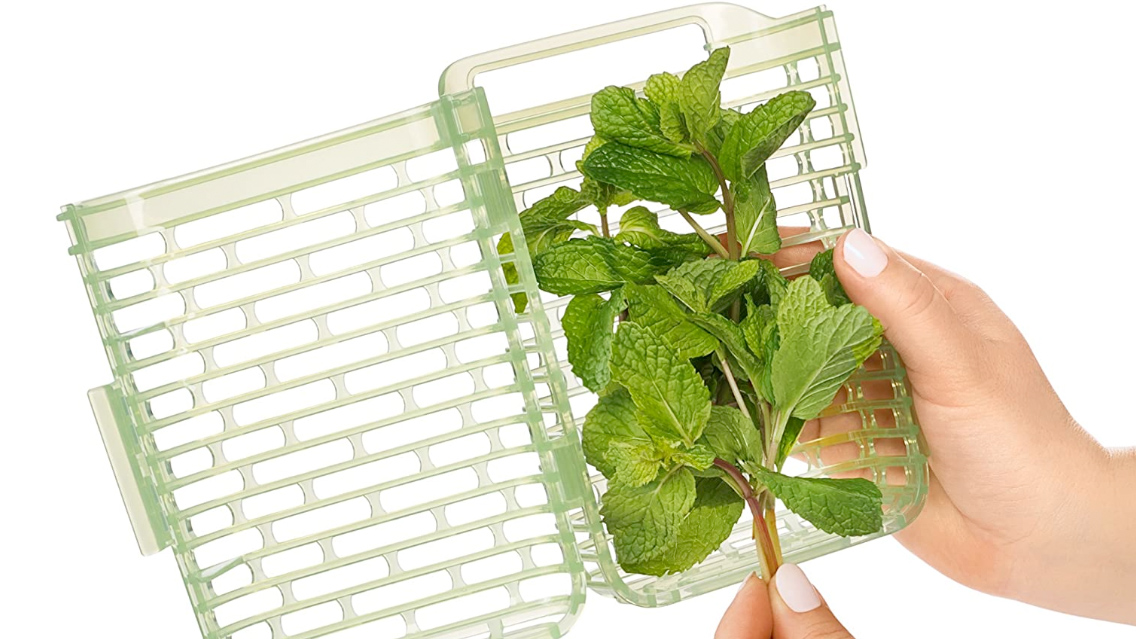
How to Store Tender Herbs
Tender herbs need some TLC when it comes to storage, so treat delicate greens like fresh cilantro, basil, parsley, dill and mint the way you would a bouquet of flowers. Once they’re clean and dry, simply snip the ends of each bunch and place it in a few inches of water. Our Herb Keeper promotes proper airflow, controlled humidity, and gives them that hydration to truly thrive. Change the water every couple of days to improve freshness.
Most tender herbs can live in your fridge, though basil is the exception. The soft leaves on this herb will blacken if exposed to the cold, so leave it on your counter (bonus: the fragrance will perfume your kitchen as you cook).
How to Store Hardy Herbs
As for storing hardy herbs like rosemary, chives, thyme, sage and oregano, these more robust varieties can be stored in the small Herb Keeper. The herbs will retain their freshness thanks to a unique basket that holds the herbs gently away from side walls to prevent wilting or rotting.
How to Chop Fresh Herbs
When it comes time to use them, fresh herbs with soft stems, such as parsley, cilantro and dill, can be chopped in the traditional style, by gathering a bundle with your fingers, squeezing it tightly together, placing on a cutting board and slicing through with a sharp knife. For others with tougher stems, remove the leaves first, then gather them together with your fingers (stack them if possible) before chopping. For recipes that call for thin ribbons of herbs (also called julienne) as garnish, fold or roll your stacks of leaves before slicing them thinly—you usually see this done with basil and sage most often.
Can You Freeze Fresh Herbs?
Short answer, yes. The freezer is a lifesaver for the long-term storage of fresh herbs. The best approach to freezing depends on the type of herbs you’re dealing with. Hardy herbs can go in a paper towel bundle and placed in a plastic freezer bag, but tender herbs need a bit of prep work before they hit the cold zone.
To freeze tender herbs, try stripping off the leaves and then placing them in a blender or food processor with a tablespoon of olive oil for every half-cup of herbs. Next, portion this green goodness into ice cube trays or freezer-safe containers and place in the freezer. Before using, you can either defrost the frozen herb cubes by leaving them at room temperature or pop them right from the freezer into the pot on the stove where they’ll flavor stews and soups as they melt.
Should You Use Fresh or Dried Herbs?
If you’ve ever started a recipe that calls for fresh sage, only to discover that you only have the dried variety at home, all is not lost. While not every dish can easily convert fresh to dry or vice-versa, often you can use fresh and dried herbs interchangeably if you stick to the proper ratio.
Since dried herbs are more concentrated and stronger in taste than fresh ones, the rule of thumb is to use less of them when swapping them into a recipe that calls for the fresh variety. An easy conversion: Use your measuring spoons and measure one tablespoon of fresh herbs for one teaspoon of dried, or a ratio of 1:3 (one tablespoon equals three teaspoons). And because dried herbs are, well, dried, you’ll want to add them early on in the cooking process, to allow them to soak up the liquids and blend with other ingredients.
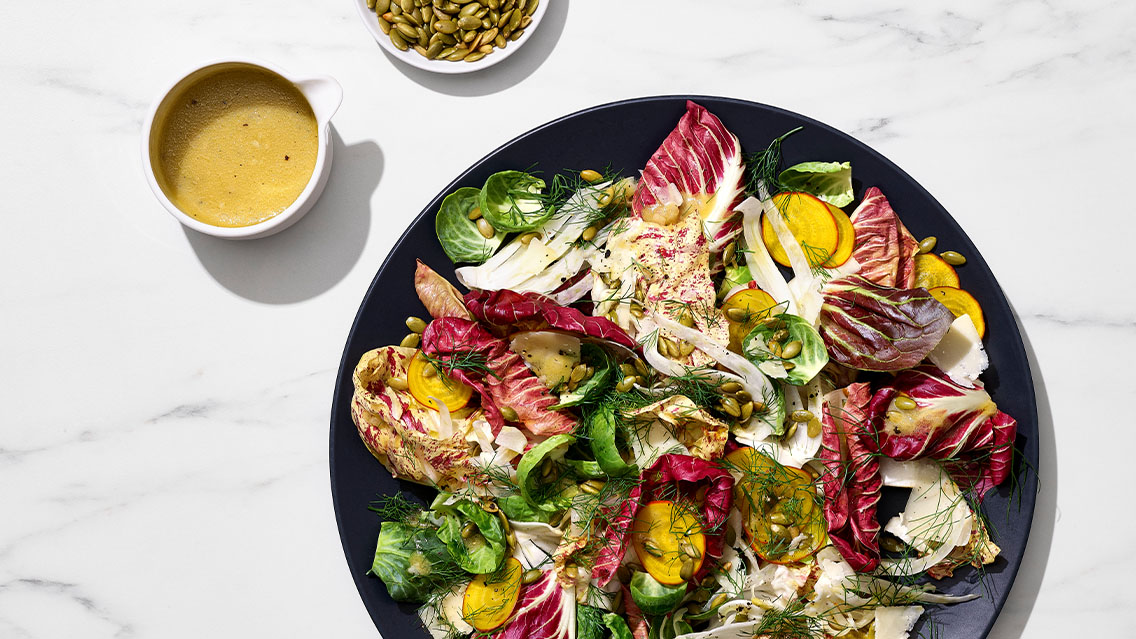
Best Uses for Leftover Fresh Herbs
Feel like it’s hard to get through a full bunch of fresh herbs? We have a few ideas for how you can incorporate them into new dishes:
- Make compound butter. Mash a few tablespoons of minced fresh parsley, basil or chives into a stick of softened butter and season to taste with salt and pepper. Compound butter can top steaks, corn on the cob and nearly every steamed veggie (green beans, broccoli, cauliflower).
- Muddle herbs for drinks. Bruise a few mint leaves with the back of a spoon in a highball glass before making your usual vodka or rum cocktail or garnish your spirits with whole sprigs of rosemary or thyme. Or you might infuse simple syrup with fresh herbs to pump up lemonade, iced tea, seltzer and other beverages.
- Add them to salad. Think of fresh herbs as tiny lettuce leaves and toss them right in with your arugula and romaine. Cilantro, basil, dill and chives work equally well in a green salad though they can also be mixed into scrambled eggs or sprinkled onto roasted veggies.
- Create a cheese spread. Just about any soft cheese (goat, feta, ricotta) can be transformed into a spread for crackers or sandwiches (mince several tablespoons of oregano or dill and mix it into softened cheese). Or kick your bagel breakfast up a notch by folding your favorite soft herbs into cream cheese.
- Fry ’em up. Whole leaves of sage can be flash-fried to top fish, ravioli, spaghetti or any other pasta dish. And fried parsley is an excellent addition to fritto misto, a mixed dish of fried seafood and (sometimes) vegetables like zucchini or artichokes.


